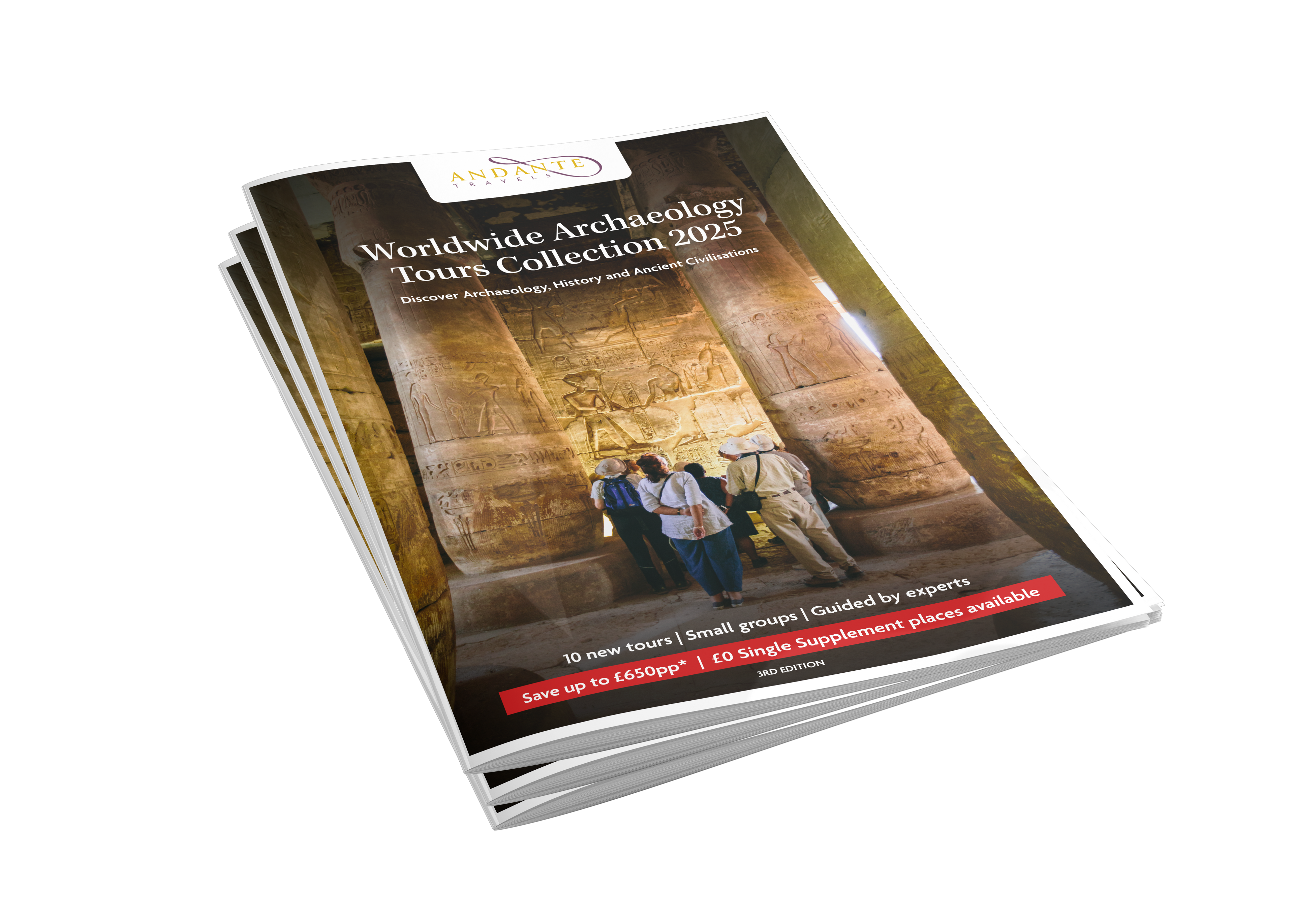Tracing Ancient Trade Routes: Exploring Oman's Archaeological Wonders

In the heart of Oman’s rich ancient history, a landscape unfolds that has long been a vibrant crossroads of commerce and culture. Oman’s historical sites tell a compelling story of trade routes that connected civilisations across millennia, from Mesopotamian copper traders to Nabatean incense merchants. This is a land where Greek and Roman seafarers, Arab traders, and countless caravans once traversed. From the legendary lost city of Ubar, swallowed by the Empty Quarter’s sands, to the intricate historical sites that dot the landscape from Muscat to Salalah, the region traces the footsteps of ancient traders and unravels a complex tapestry of historical significance.
Join Andante on tour in Oman. Explore the Bronze Age tombs at Bat, a UNESCO World Heritage site and discover the once lost city of Ubar in the sands of the Empty Quarter.

Muscat
Muscat, an ancient trading city noted by the geographer Ptolemy in the 2nd century, stands as a testament to Oman’s rich historical significance. At times part of the Sassanid Persian Empire, the city was a crucial centre of trade and power on the Gulf of Oman and Indian Oceans. Portuguese occupation lasted a century, but from the 17th century, Muscat became a pivotal hub of the Omani Empire, with its rulers ultimately overcoming the Imam princes of Nizwa to govern all Oman. The Grand Mosque exemplifies architectural splendour, while the labyrinthine alleyways of Muttrah Souq reflect centuries of trading heritage. The Al Alam Palace showcases royal grandeur, and the National Museum of the Sultanate of Oman presents a comprehensive journey through the nation’s history—from the earliest human settlements to the present day, capturing the essence of Oman’s cultural and historical evolution.
Al Hazm fort and the UNESCO Site of Bat reveal Oman’s extraordinary Bronze Age archaeological landscape. The region represents a vital centre of early metallurgy, with an extensive necropolis of distinctive ‘beehive’ dry stone tombs belonging to the Umm-an Nar culture of the 3rd millennium BC. These remarkable tombs form part of a major copper mining settlement, with archaeological evidence demonstrating that copper ore was exported as far as Mesopotamia, and regional smelting was a sophisticated technological practice. The site’s date palm orchards frame these ancient structures, creating a landscape that seamlessly connects prehistoric technological achievement with the natural environment of Oman.
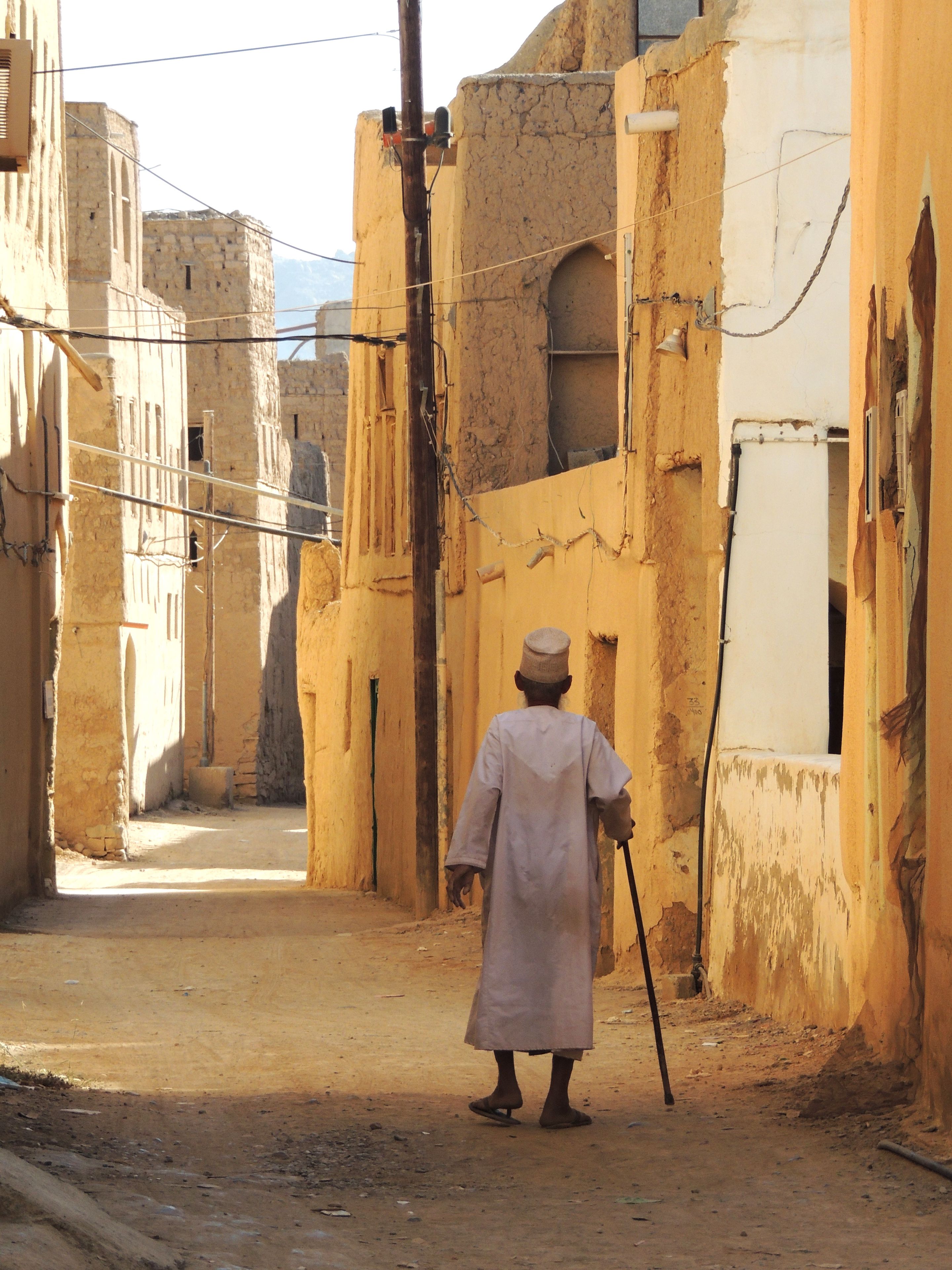
Al Hamra and Wadi Nakhr
Al Hamra, nestled in the foothills of Jabel Ahkdar, is a picturesque village renowned for its historic multi-storied mud houses surrounded by expansive date plantations. The nearby Wadi Nakhr represents Oman’s deepest canyon, hosting significant archaeological treasures including Bronze Age tombs and ancient rock art. This landscape exemplifies the remarkable architectural and geological diversity of Oman, showcasing traditional building techniques amidst dramatic natural terrain, with the stone houses and irrigation systems revealing the ingenious adaptation of human settlements to challenging mountainous environments.
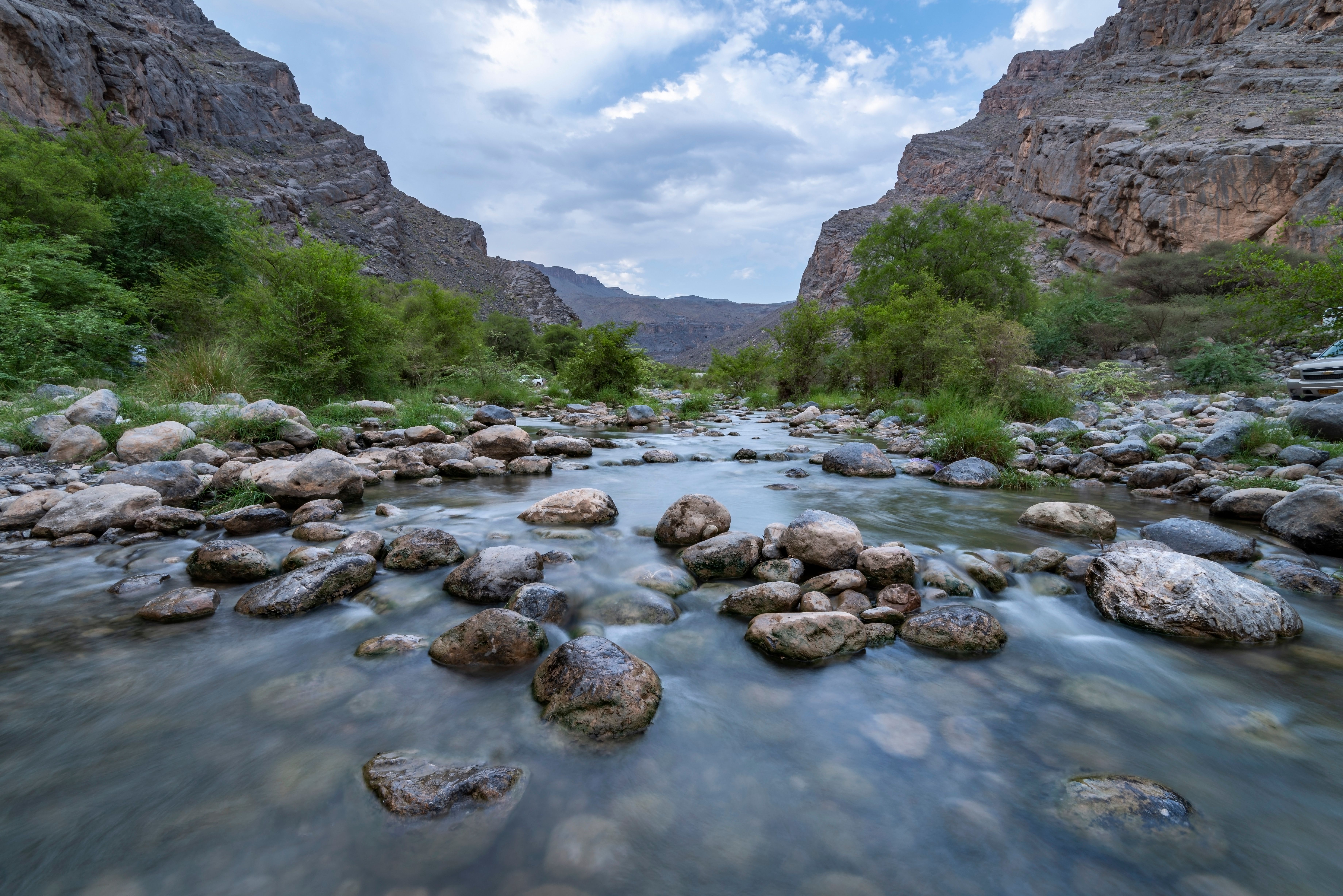
Wadi Tanuf, Nizwa, Jabrin and Salut
Wadi Tanuf, set against the Al Hajar mountains, reveals prehistoric archaeological treasures including rock art and Hafit Early Bronze Age tombs. Nizwa, the historic capital of the Imamate of Oman, stands as a significant cultural centre with its iconic Round Tower Fort and renowned souq featuring intricately hand-carved khanjars and ornamental silver jewellery. Jabrin, more a fortified palace than a traditional fort, represents a 17th-century architectural marvel built by Bil’arub bin Sultan, which became a distinguished centre of Islamic scholarship. Salut archaeological site near Bisyah offers rare evidence of civilisational development in the Arabian Peninsula during the Bronze and Iron ages, presenting an extraordinary collection of ancient fortifications and ruins that illuminate the region’s complex historical landscape.
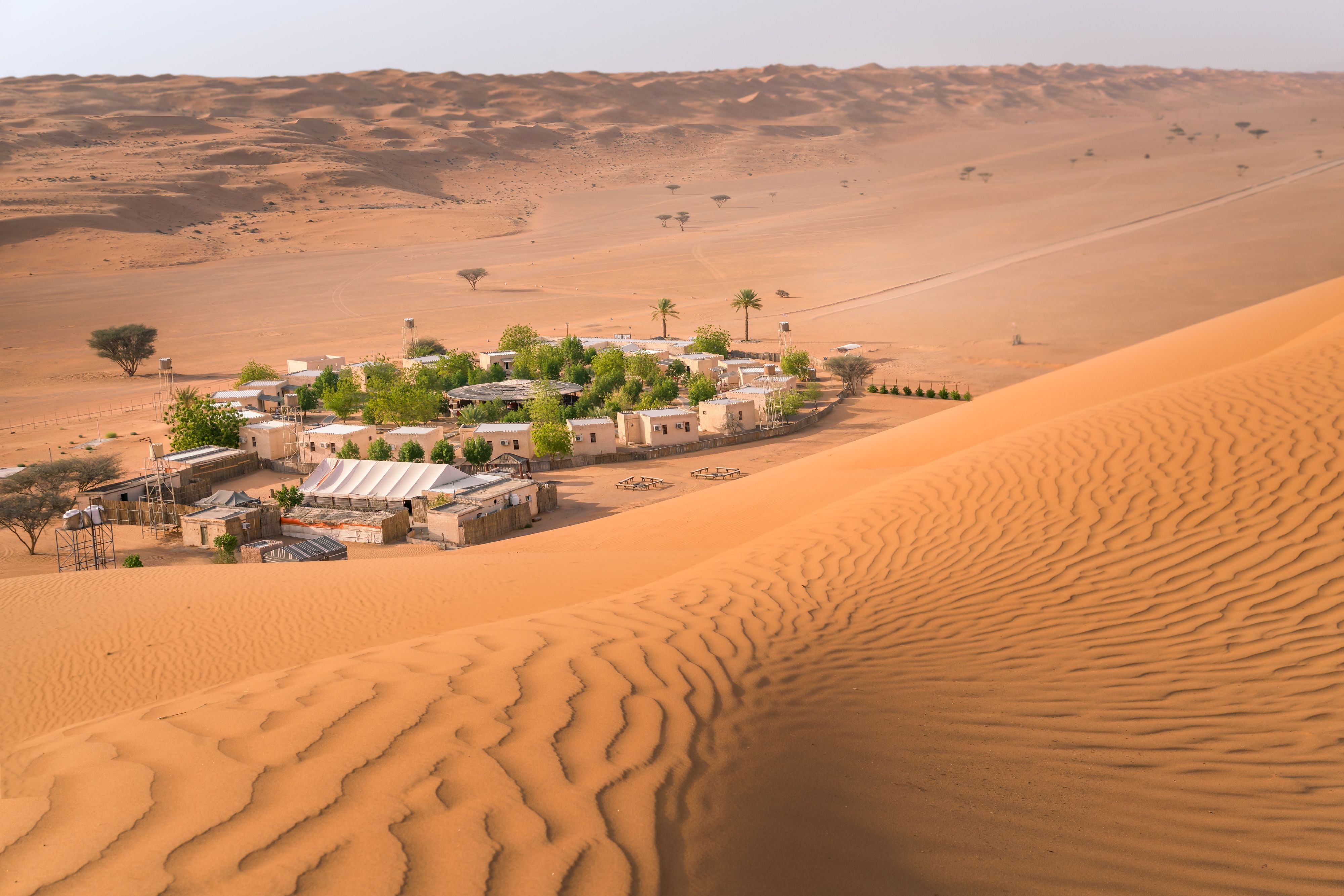
Wahiba Sands
Wahiba Sands is a vast desert region inhabited by the Bani Wahiba, Al-Harthy and Al-Hinawy tribes. The northern part of the Wahiba is dominated by huge parallel layered rusty coloured dunes.
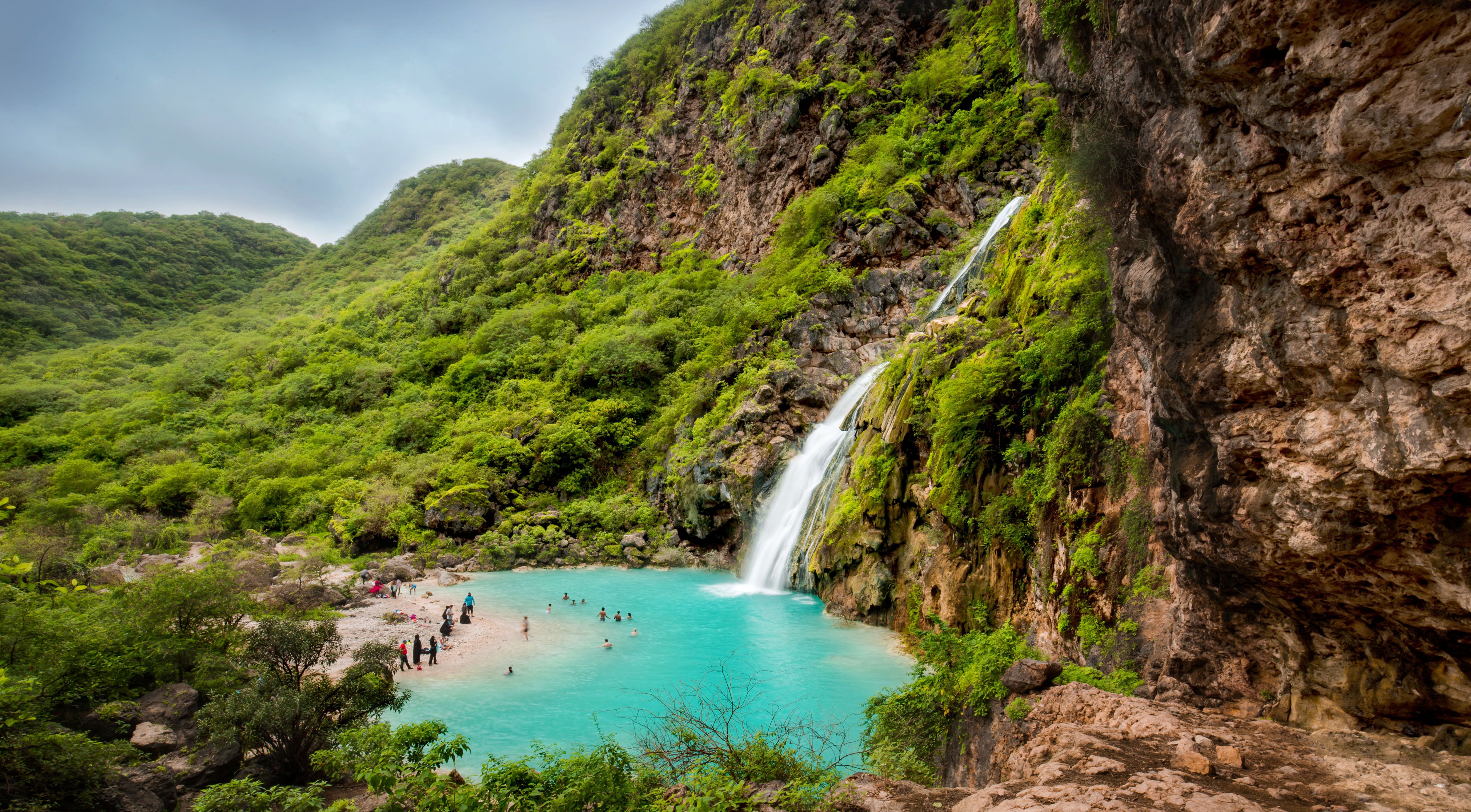
Salalah
Salalah the historic centre of Dhofar and source of the frankincense trade which flourished in this region for centuries. Highly valued for its aromatic properties, frankincense was one of the most important commodities in the ancient and medieval world and its extraction was responsible for the construction of cities, forts, and irrigation systems in the harsh desert environment.

Sumhuram, Wadi Darbat and Mirbat
Khor Rori Creek and the ruined city of Sumhuram represent a pivotal eastern outpost of the Arabian kingdom of Hadramawt, serving as the capital of the frankincense trade before Islam. Positioned on a bluff overlooking the sea, the site offers profound insights into ancient maritime commerce. Nearby, Wadi Darbat emerges as a stunning natural landscape featuring waterfalls, lakes, mountains, caves, and diverse wildlife. Mirbat, a historically significant town dating to the ninth century, was renowned for its trade in frankincense, horses, and slaves, with architectural treasures including houses famous for intricate woodcarvings. Bin Ali’s Tomb stands as an exceptional example of medieval Arabian architectural achievement, embodying the region’s rich historical and cultural heritage.

Hanum, Empty Quarter and Ubar
Hanun emerges as a critical depot along ancient frankincense routes, featuring remarkable 5th-century B.C. triliths—distinctive groups of three stones perched together. The legendary city of Ubar, located at Shisr within the Rub Al Khali (Empty Quarter), represents a mythical crossroads of Arabian frankincense trade. Vanished beneath the desert sands around AD 300, Ubar became a Koranic legend and archaeological mystery. A breakthrough 1992 expedition, utilising satellite imaging, discovered an ancient, fortified spring that potentially explains the city’s mythical origins. This landscape embodies the complex interactions between trade, geography, and cultural mythology in the Arabian Peninsula’s prehistoric trading networks.

Al Balid
Al Balid, the ancient port city of Zafar, stands as Oman’s first archaeological park and a UNESCO World Heritage Site within the Land of Frankincense. The archaeological site reveals complex urban infrastructure including watchtowers, bridge pylons, and foundational remains of houses, souqs, and mosques. Its site museum houses a comprehensive collection documenting the city’s frankincense trading history, offering profound insights into the maritime commercial networks that defined this region’s historical significance.
NEWSLETTER
Opt-in to our email newsletter and hear about new offers first – view our privacy policy for details.
